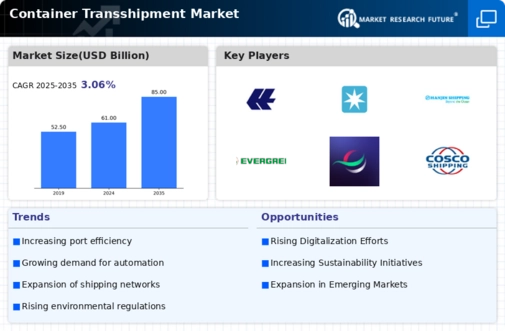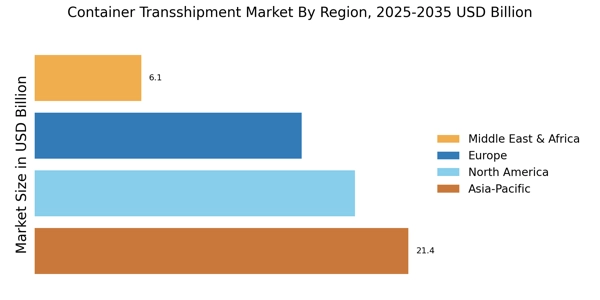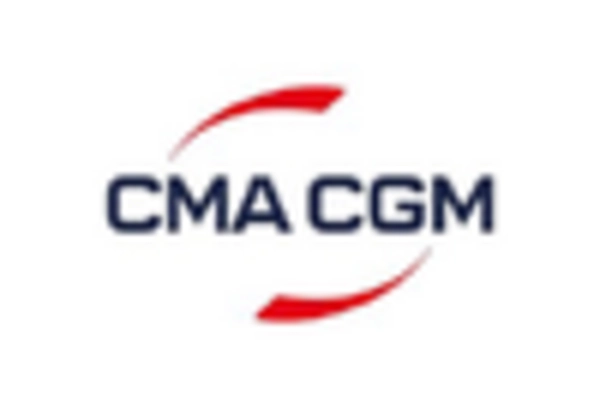Shifts in Trade Patterns
The Container Transshipment Market is also shaped by evolving trade patterns, particularly as emerging economies continue to integrate into the global supply chain. The rise of trade agreements and partnerships among nations is facilitating increased container traffic, as countries seek to capitalize on new market opportunities. In 2025, it is anticipated that transshipment volumes will increase by approximately 10% in regions such as Southeast Asia and Africa, driven by enhanced trade relations. This shift necessitates a robust transshipment network to manage the growing flow of goods, thereby positioning the Container Transshipment Market as a critical component of international trade.
Strategic Port Developments
The Container Transshipment Market is significantly influenced by strategic developments in port infrastructure. Many countries are investing heavily in expanding and modernizing their ports to accommodate larger vessels and increase transshipment efficiency. For instance, the construction of deep-water ports and the enhancement of existing facilities are expected to improve the overall capacity and speed of container handling. In 2025, it is estimated that over 50 new port projects will be initiated, which could potentially increase global transshipment capacity by 15%. These developments not only enhance operational efficiency but also attract more shipping lines, thereby fostering growth within the Container Transshipment Market.
Technological Innovations in Logistics
Technological advancements are playing a pivotal role in transforming the Container Transshipment Market. Innovations such as automation, artificial intelligence, and blockchain technology are enhancing operational efficiency and transparency in logistics. For example, the implementation of automated cranes and smart containers is expected to reduce turnaround times at ports, thereby increasing overall productivity. In 2025, it is projected that the adoption of these technologies could lead to a 20% reduction in operational costs for shipping companies. As these technologies become more prevalent, they are likely to reshape the competitive landscape of the Container Transshipment Market, driving further growth and efficiency.
Increasing Demand for Container Shipping
The Container Transshipment Market is experiencing a notable surge in demand for container shipping services. This trend is primarily driven by the expansion of e-commerce and the increasing need for efficient logistics solutions. In 2025, the volume of containerized cargo is projected to reach approximately 1.8 billion TEUs, reflecting a compound annual growth rate of around 4.5%. This growth necessitates enhanced transshipment capabilities to facilitate the seamless movement of goods across various regions. As shipping lines seek to optimize their operations, the Container Transshipment Market is likely to benefit from investments in port infrastructure and advanced logistics technologies, which could further streamline the transshipment process.
Environmental Regulations and Sustainability Efforts
The Container Transshipment Market is increasingly influenced by stringent environmental regulations and a growing emphasis on sustainability. Governments and international organizations are implementing policies aimed at reducing carbon emissions and promoting eco-friendly practices within the shipping sector. In 2025, it is expected that compliance with these regulations will drive investments in cleaner technologies and alternative fuels, potentially increasing operational costs for shipping lines. However, this shift towards sustainability may also create new opportunities within the Container Transshipment Market, as companies that adopt green practices could gain a competitive edge and attract environmentally conscious customers.


















Leave a Comment